
views
X
Trustworthy Source
Cleveland Clinic
Educational website from one of the world's leading hospitals
Go to source
Relieving Pain with Home Treatments
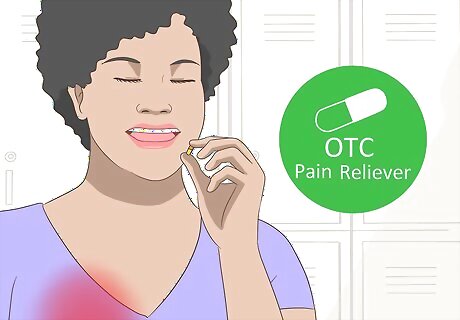
Take over-the-counter pain relievers to reduce pain. Pleurisy usually causes a sharp pain in your chest while you inhale. Over-the-counter pain medications, such as ibuprofen or anti-inflammatories, can do a lot to reduce pain. Follow the directions on the packaging for dosing and the length of time you can take the medication without a break. If your over-the-counter pain medication is not providing enough relief, talk to your doctor about increasing your dose or getting a prescription for stronger pain medication.

Take a cough suppressant to avoid painful coughing fits. If you are coughing a lot, you should take over-the-counter cough medicine to minimize it. Follow the dosing directions on the packaging but try to take the syrup right when your coughing begins. If an over-the-counter cough syrup doesn’t work well enough, ask your doctor about getting a prescription for a codeine-based cough syrup. Codeine-based cough syrups work very well at suppressing coughing. Codeine may be prescribed, but it is potentially addictive and can cause side effects, such as shortness of breath, sleepiness, dizziness, and constipation. Follow your doctor's directions for use closely, especially if you are combining it with acetaminophen. Pleurisy can be an especially painful condition when you are coughing, as the coughs exert a lot of pressure on the membrane around the lungs.
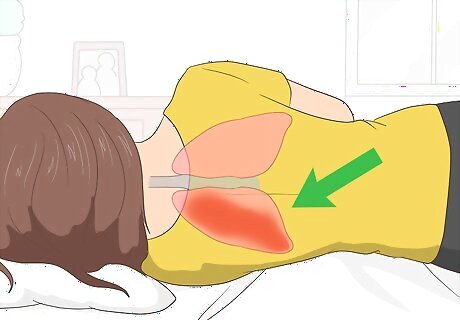
Position your body so that pain is minimized. In many cases of pleurisy pain, just moving your body can change the amount of pain you are having. For example, many people have some relief when they lay on the side of their lungs that is painful. Adjusting your position and lying on the painful area will minimize how much the membrane around your lungs is able to move when you breathe in and out.

Rest your body as much as possible. Deep breaths can make the pain of pleurisy much worse, so it’s a good idea to eliminate activities that cause you to breathe deeply. Don’t exercise or exert yourself if you don’t have to while you are coping with this condition. Many cases of pleurisy go away on their own in a few days or weeks depending on its severity. During this time you should try to move as little as possible to keep the stress on your lungs as low as possible.
Getting Medical Treatments
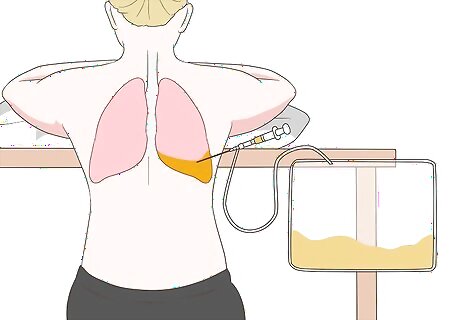
Try having excess fluids removed with an outpatient medical procedure. This procedure is called a thoracentesis. It is done by inserting a needle into the chest between the ribs and then drawing the fluid out of the area around the lungs. You will sit in a chair or on a hospital bed while the doctor inserts the needle and draws the fluid out. Your doctor may numb the area where the needle is going to be inserted but you will likely experience some discomfort while it is happening. Once the fluid is drained, your pain will be minimized because there will be less pressure on the pleural area.
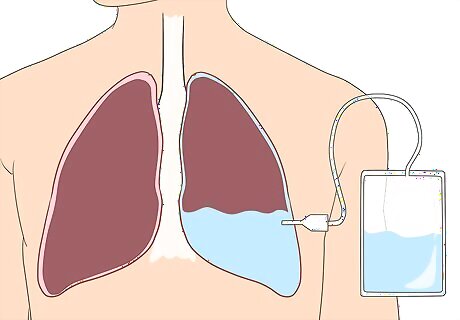
Have an inpatient procedure if your condition is severe. If your pleural space is full of fluid, this procedure can remove many cups of fluid and will require a plastic tube to be inserted into the chest. If you need this procedure, you will be admitted into the hospital for the entire duration. This type of procedure can take several days to complete since it could take some time for all the fluid to drain out.
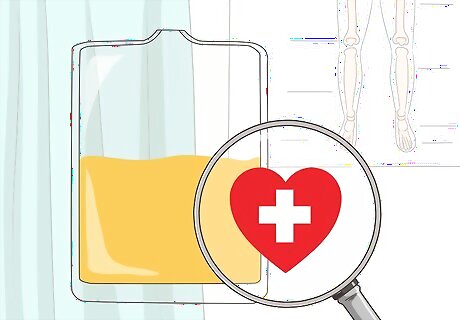
Test the fluids that have been removed to get an exact diagnosis. Your doctor can use the fluids they remove to better understand your condition and to come up with an appropriate treatment plan. The doctor or their lab tech will look for signs of heart failure, tumors, fungal infections, bacterial infections, rheumatologic conditions, and tuberculosis in the fluid, which are all common causes of pleurisy. Discuss your diagnosis thoroughly with your doctor before beginning your treatment.

Take prescription medications to treat the underlying cause of your condition. Once your doctor figures out what is causing your condition, they will be able to prescribe you medication to treat its cause. Common prescription medications that are used to treat pleurisy include: Antibiotics for bacterial infections Antifungal medications for fungal infections Antitumor medications, such as chemotherapy drugs, for tumors Diuretics to treat heart failure














Comments
0 comment